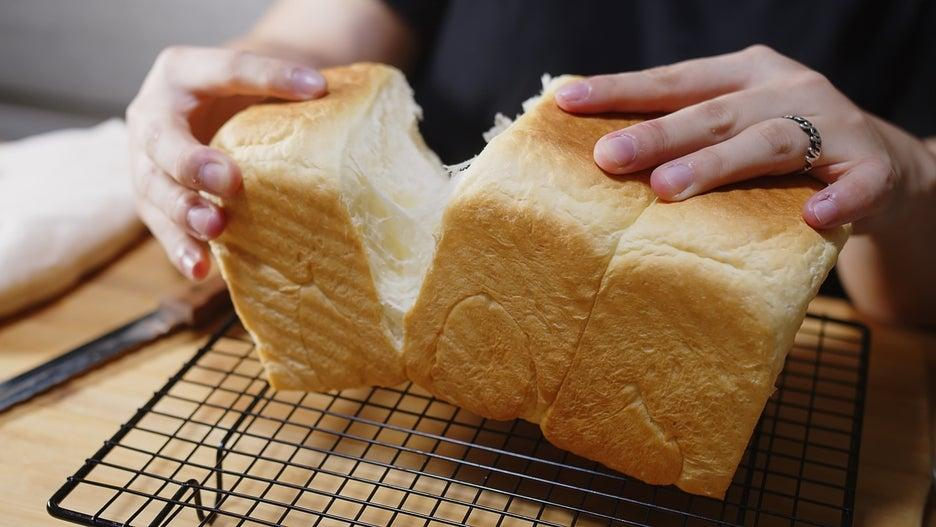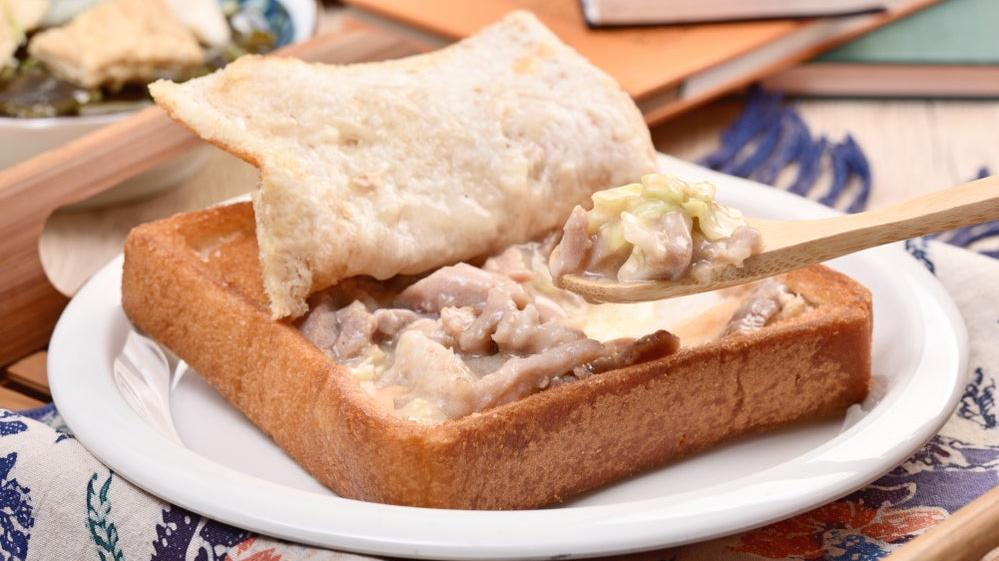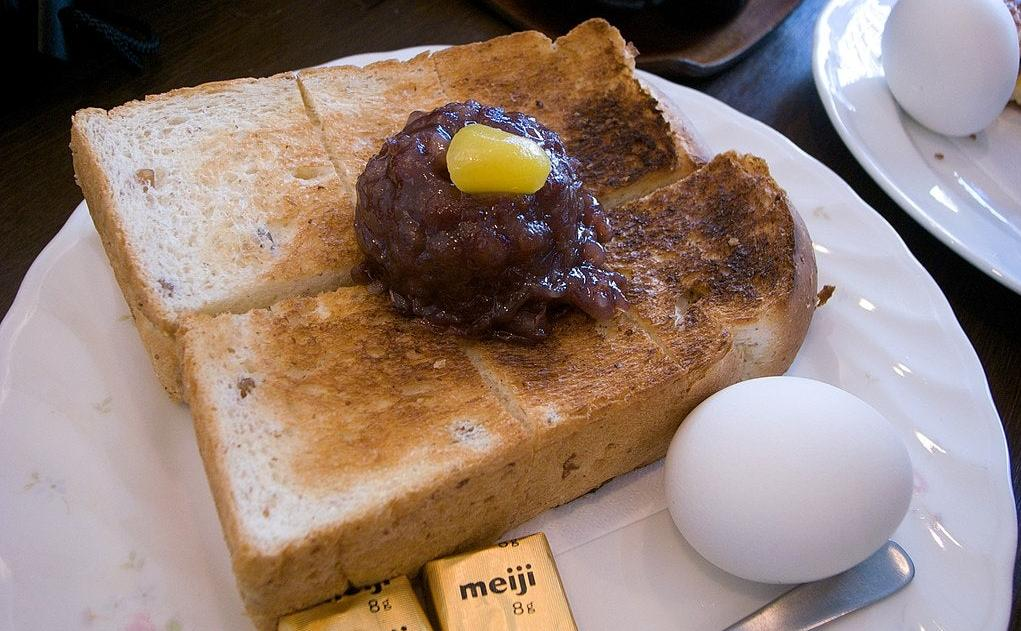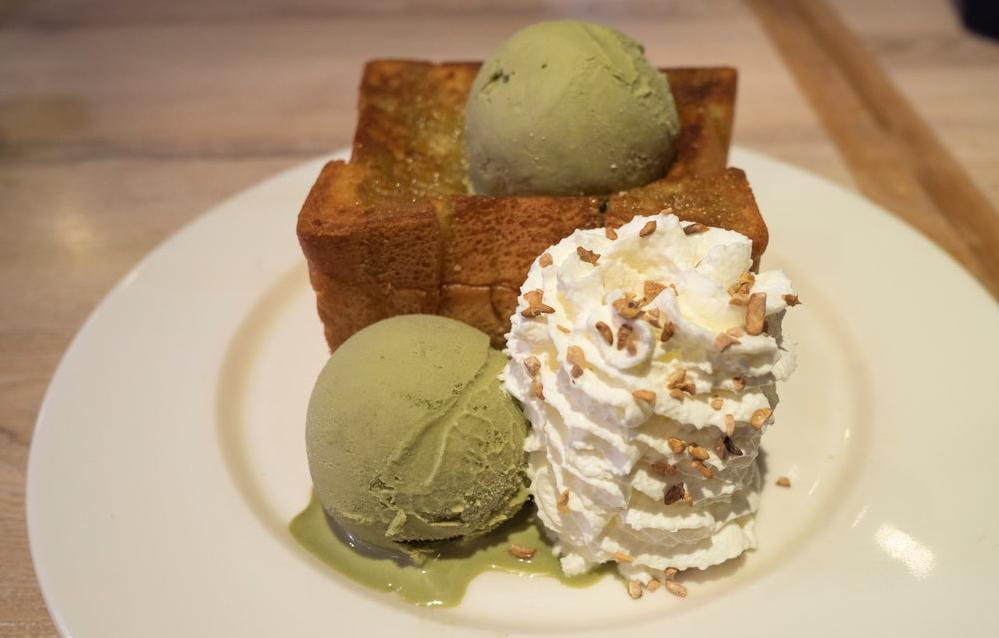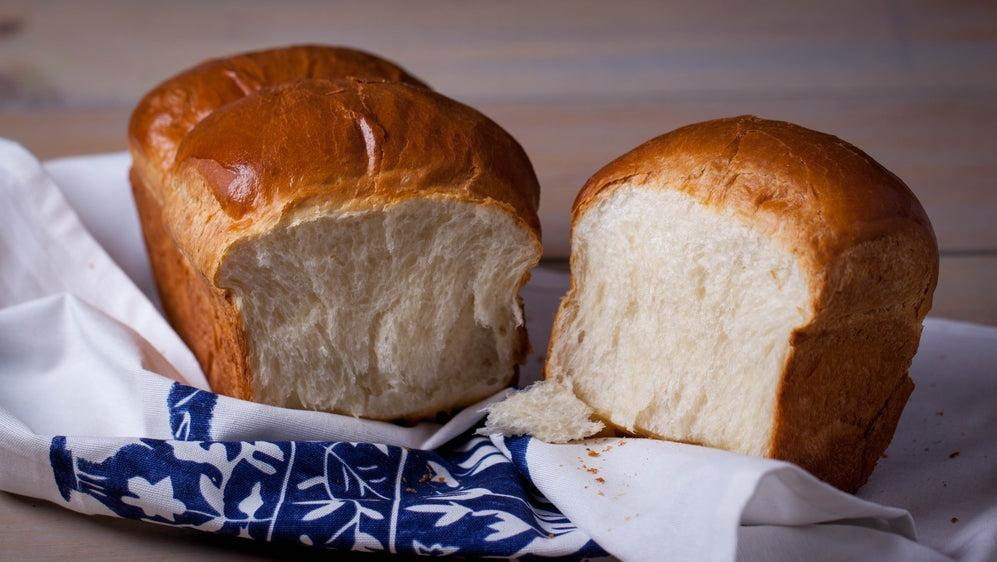These Dishes Make White Bread Anything But Boring
White bread doesn't always have to be milquetoast.
Sliced white bread is a category unto itself. Soft, squishable, and light on flavor, it acts as a sponge for dark, savory barbecue sauce; unites peanut butter and jelly in holy matrimony; and makes a damn good slice of toast. Yet white bread is rarely, if ever, the star of the show here in the US, and in that way, it's an outlier.
More notable for the things it lacks—such as color—white bread hardly garners the same enthusiasm as dense, crusty bakery loaves. In many Asian countries, however, white bread has both different context and connotation: Rather than the substance-free counterpoint to heartier, more sophisticated breads, white bread forms the base of towering, visually arresting creations like Shibuya honey toast and Taiwanese coffin bread, while still comprising everyday foods like buttered toast and convenience store sandwiches.
A brief history of white bread
So-called Western-style bread—bread baked in an oven, rather than steamed or fried like Chinese baozi or mantou—arrived in Japan via Dutch and Portuguese trading ships that docked in the port city of Nagasaki in the 16th century (the word for bread in Japanese is an interpretation of the Portuguese word pão). Japanese bakers eventually developed their own style of bread called shokupan: literally, "food bread." Today, white loaf-style bread is commonly found in many Asian countries, including Singapore, South Korea, and Taiwan.
To open your eyes to the expansive wonders of the humble sandwich loaf, we've provided a brief overview of some of the most distinctive white-bread-based dishes found throughout Asia, and how you can obtain them (or make them) yourself.
Coffin Bread
Coffin bread, or guan cai ban, is a sinister-sounding but iconic Taiwanese night market dish consisting of an inches-thick slice of white bread that's fried, hollowed out, and filled with a cream-based seafood and chicken stew, then topped with a toasted bread lid. Said to have originated in the southern city of Tainan in the 1940s, according to sites like What to Cook Today, coffin bread is similar in construction to the South African dish bunny chow, and is also often compared to American pot pie or soup in a bread bowl.
You'll find a plethora of recipes online, including one from Saveur, which involves brushing the bread with butter and baking it instead of frying. If you're not up for making coffin bread yourself, you might need to hop a flight to Tainan, as there don't seem to be many US restaurants that make it (but by all means, let us know if you find one).
Ogura Toast
Ogura toast is a Japanese breakfast treat originating in the southern city of Nagoya. Made of just a few simple ingredients—a slice of shokupan (atsugiri, or extra thick-cut) spread with butter or margarine, a dollop of ogura an (sweet red bean jam), and occasionally whipped cream—it's a staple of Japanese kissaten, or old-school coffee shops, where it can be ordered as part of a "morning set" with coffee.
Stateside, you can order an ogura toast set at New York's Davelle, a modern kissaten that also offers lunch and dinner options like chicken katsu curry and cod roe spaghetti. You can also buy canned ogura an at your local Asian supermarket if you want to try making this toast at home.
Shibuya Honey Toast
Also called brick toast or Shibuya toast, Shibuya honey toast consists of an imposing slab of toasted white bread, similar to coffin bread, that gets hollowed out and stuffed with fillings like ice cream, fruit, and toasted cubes of its own scooped-out innards. The name refers to the bustling Tokyo neighborhood where the dish is thought to have been invented, according to Gastro Obscura.
Popular as well in both Taiwan and Singapore, honey toast is one of a spate of recent Japanese sweet dishes to find a foothold in the States: others include souffle pancakes and taiyaki. An Instagram search for #honeytoast and #honeybricktoast pulls up hundreds of specimens of varying degrees of architectural excess, and you can order it at spots like Grace Street Cafe in New York's Koreatown and Oh My Pan in Los Angeles' San Gabriel Valley. You can also try making it at home: recipes abound on blogs like Chopstick Chronicles, and on food sites including Saveur and Food52.
Milk Bread
Toast it, stuff it, and slather it with whatever you want, but Asian-style milk bread offers an ethereal eating experience on its own, too. In Japan, you'll find bakeries dedicated almost entirely to the perfect loaf of shokupan, and it's on the menu at a number of specialty Japanese or Asian-inspired bakeries, like Pâtisserie Fouet in New York and Breadbelly in San Francisco.
These days, however, you can pick up a loaf at nearly any Japanese or Korean bakery, and at stores like Mitsuwa Marketplace and H Mart. If you're feeling particularly ambitious, you can try baking it yourself: the New York Times and Bon Appetit both offer recipes. Once you've got a whole loaf to work with, you can go about making any of the above dishes, as well as everything from a pork katsu sandwich to a Japanese convenience-store-style egg salad sandwich, a la the Los Angeles cafe Konbi. Alternatively, just tear out the cottony center and eat it like a little kid would.
